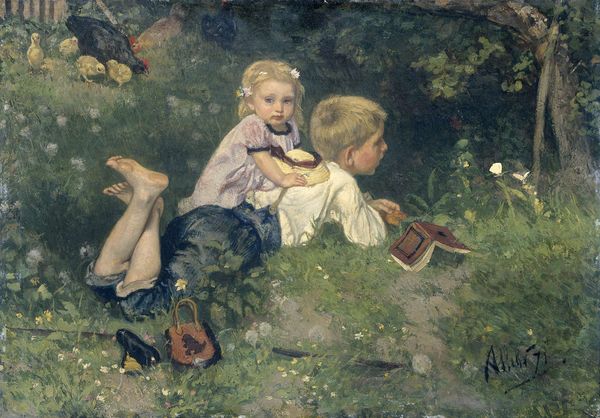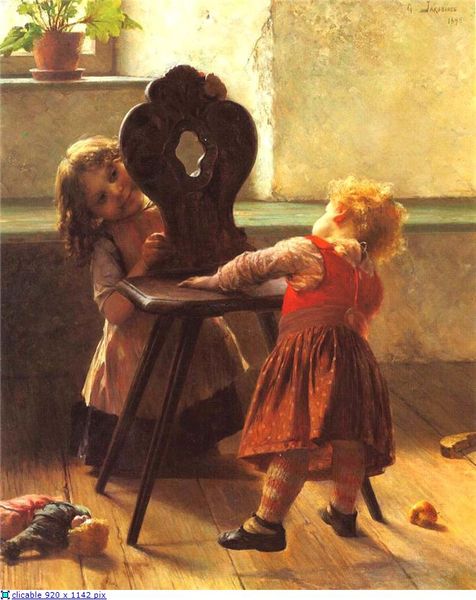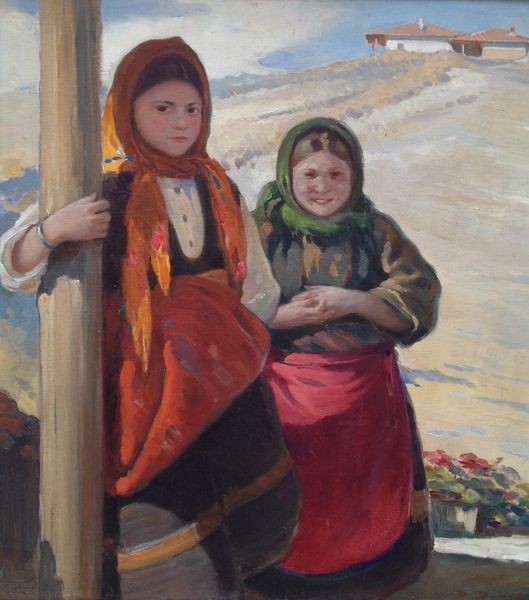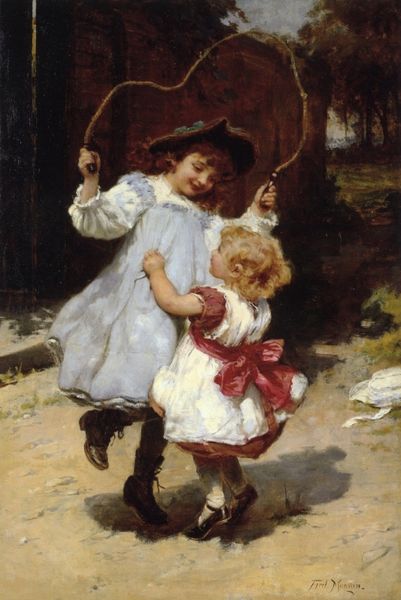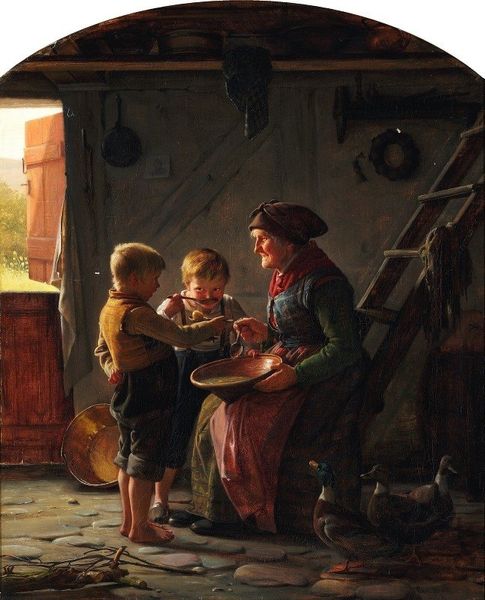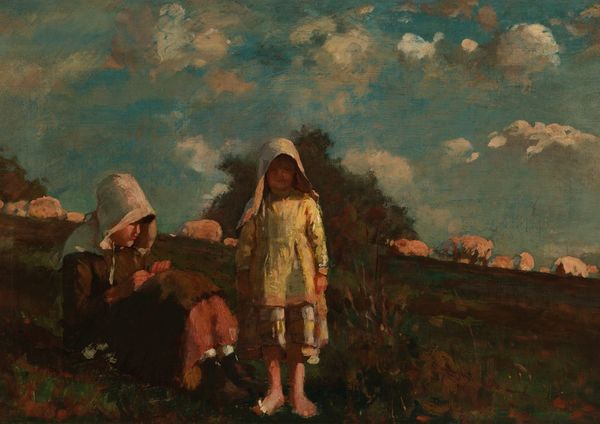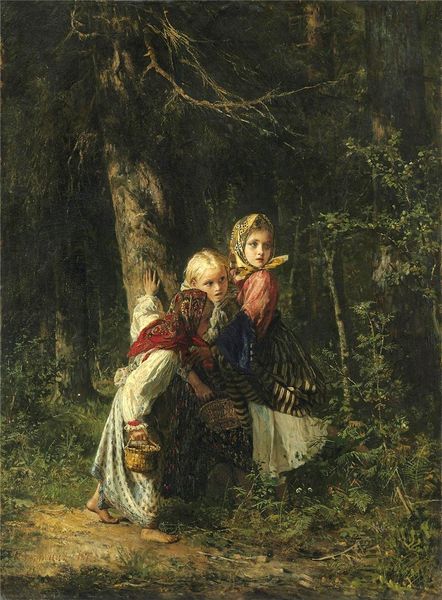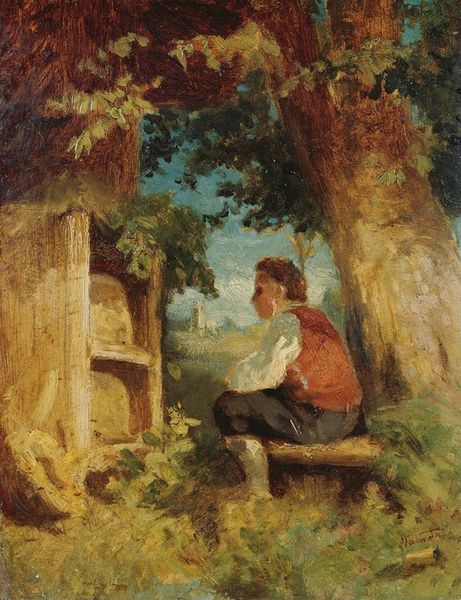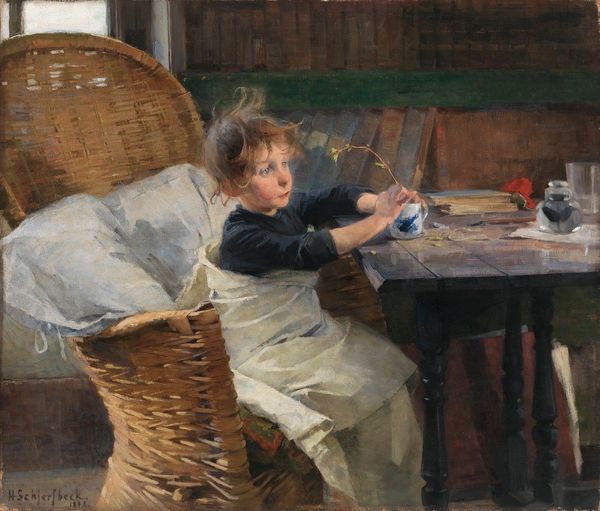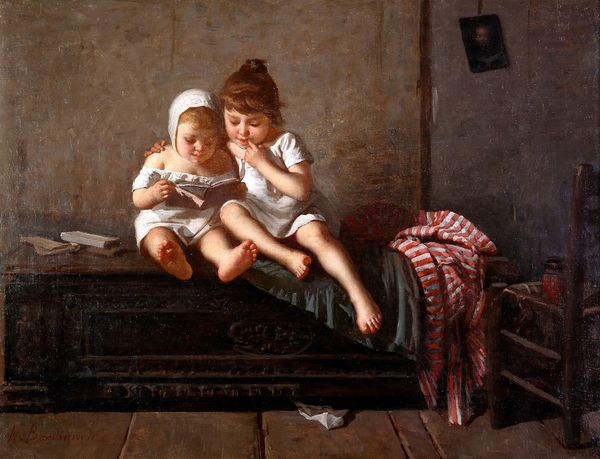
painting, oil-paint
#
portrait
#
painting
#
oil-paint
#
landscape
#
oil painting
#
romanticism
#
hudson-river-school
#
genre-painting
#
realism
Copyright: Public domain
Editor: Eastman Johnson’s painting, "The Confab," it’s oil on canvas and undated. It depicts two children in what looks like a barn, having a hushed conversation. It's fascinating how Johnson uses the setting. What do you see in this piece? Curator: Looking at this work through a materialist lens, the rural setting isn't just picturesque. Consider the socio-economic realities. The barn, the hay, the children’s clothes, though rendered beautifully, speak volumes about labor and its representation. How do the worn textures and implied processes of rural life influence your reading of the work? Editor: I hadn't thought about it that way, but the texture definitely emphasizes the hard work, which is even more visible here. The clothing, it does give an idea of labour and how people of the period produced those materials. The roughness seems intentional, especially against the delicate faces. How might the consumption of these images by urban audiences play into its meaning? Curator: Precisely. Eastman Johnson worked during a period of great industrial and social change, right? Think about the market for such genre paintings, often consumed by middle and upper-class urban dwellers. Were they looking for a romanticized view of rural life, detached from the labor involved? Are these depictions simply reinforcing social class divides? Editor: That makes me consider it differently. They're consuming the idea of that rural labour, romanticising it even! I always focused on it as just portraying two innocent kids. Now it really seems like Johnson subtly touches on something more critical. Curator: It becomes a reflection on consumption, doesn’t it? It makes you question who produced the painting, who is depicted, and who ultimately buys and consumes it. I think Johnson pushes at the boundaries between “high art” and the more labour-intensive folk arts as well. Editor: Yes, I'll certainly be thinking about the materials and production involved when I look at art now. Thank you. Curator: Indeed! Shifting our perspective toward production truly transforms how we experience these kinds of idyllic scenes.
Comments
No comments
Be the first to comment and join the conversation on the ultimate creative platform.
